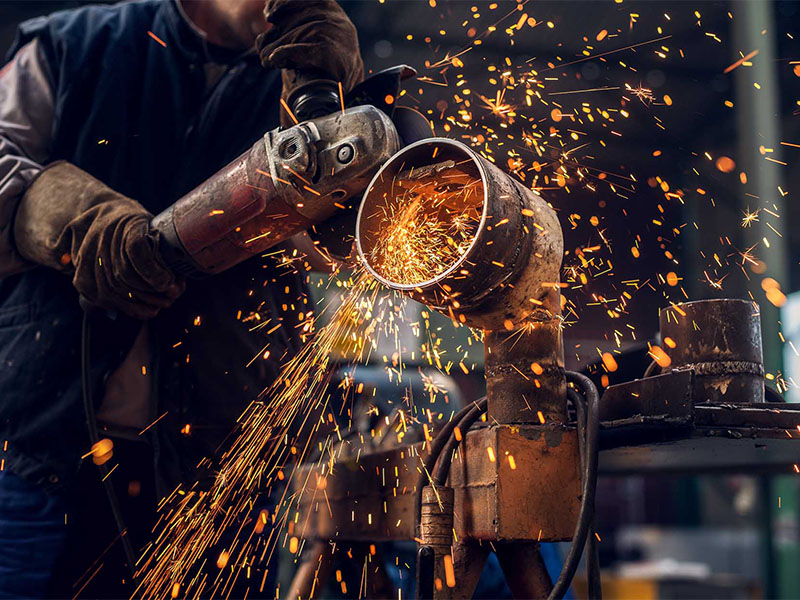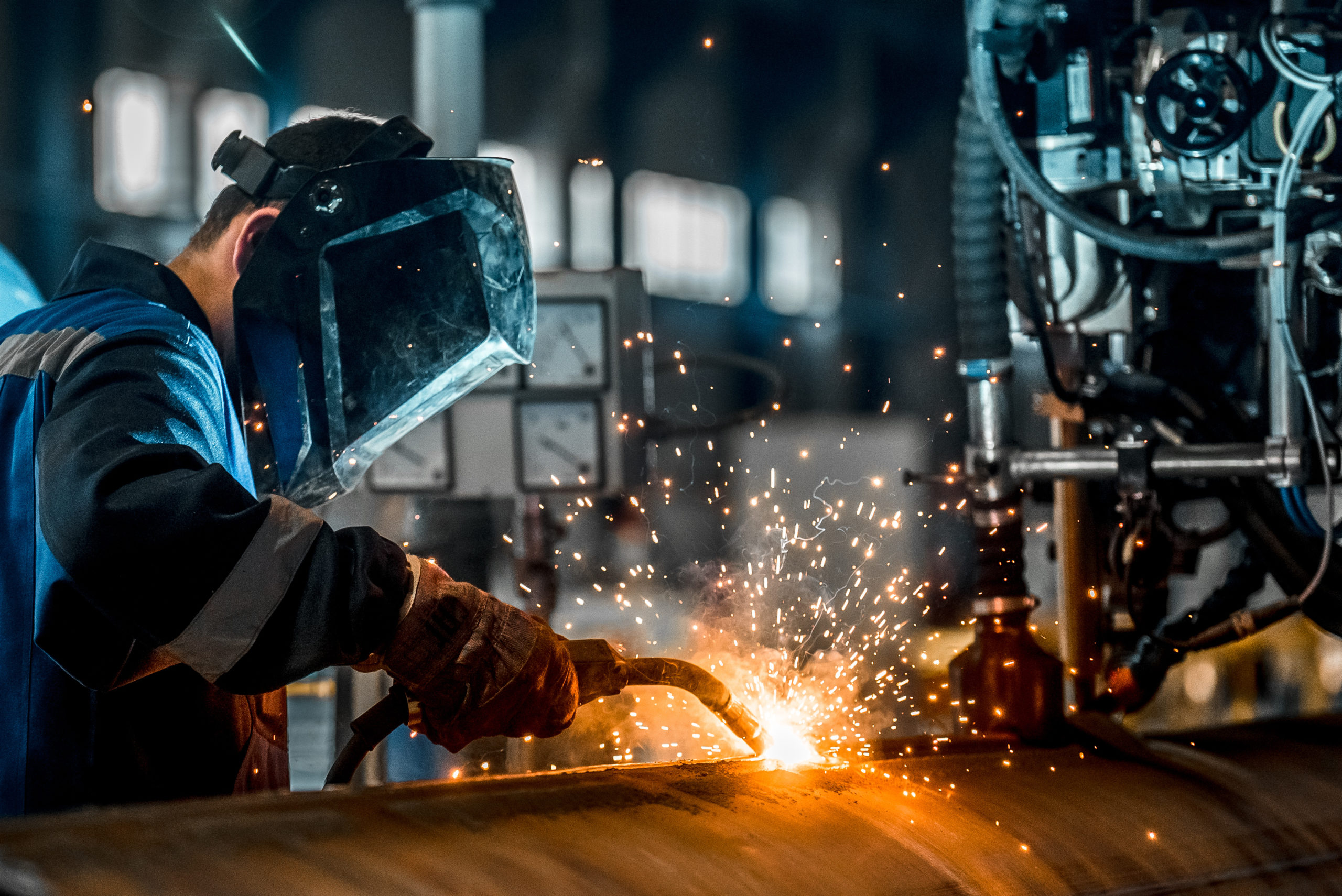Advanced weld correction methods from Belgrade Welding professionals
Wiki Article
All About Welding: Trick Insights Into Techniques and Best Practices for Success
Welding incorporates a variety of strategies, each suited for details materials and applications. Recognizing these methods, such as GMAW, SMAW, and TIG, is crucial for accomplishing optimal outcomes. The appropriate equipment and safety methods can not be overlooked. As prep work and repairing play important functions in the welding procedure, grasping these aspects can substantially improve the top quality of the end product. What are the vital variables that guarantee an effective weld?Recognizing Various Welding Techniques
Welding techniques include a variety of techniques, each matched to specific applications and materials. Among the most typical strategies are Gas Steel Arc Welding (GMAW), Secured Metal Arc Welding (SMAW), and Tungsten Inert Gas Welding (TIG) GMAW, likewise called MIG welding, is prominent for its rate and flexibility, making it ideal for thin materials. SMAW, or stick welding, is favored for its simplicity and efficiency in outdoor environments, especially with thicker steels. TIG welding uses precision and control, making it suitable for elaborate work and non-ferrous metals (Welding). Each technique has its special advantages and considerations, allowing welders to select the most effective method based upon the job's needs, product kind, and wanted end results. Comprehending these techniques is essential for effective weldingCrucial Welding Tools and Devices
While different welding techniques require certain skills, the appropriate devices and devices are equally crucial for accomplishing quality results. Vital welding tools consists of welding makers, which vary depending upon the strategy-- such as MIG, TIG, or stick welding. Protective gear, including aprons, handwear covers, and headgears, assurances security and convenience during the process. On top of that, components and clamps assist protect materials in position, guaranteeing precision in welds. Consumables like welding poles, cord, and protecting gas are likewise vital elements that influence the high quality of the weld. Devices such as mills and cutters facilitate surface area preparation and post-weld finishing, adding to an expert end result. Buying top quality devices inevitably enhances the effectiveness and performance of welding jobs.Safety And Security Practices in Welding
Appropriate security methods are vital in the welding market to protect workers from possible hazards. Welders must wear ideal individual safety devices (PPE), consisting of safety helmets with correct shading, gloves, and flame-resistant clothing. Sufficient ventilation is important to decrease exposure to hazardous fumes and gases produced during the welding process. In addition, employees ought to be learnt the correct handling of welding devices to avoid crashes. Fire precaution, such as keeping flammable materials away from the welding area and having fire extinguishers easily available, are essential. Regular examinations of devices and work spaces can assist determine potential threats before they lead to accidents. By sticking to these safety methods, welders can create a much safer working environment and decrease risks related to their trade.Readying Products for Welding
Preparing materials for welding is a vital action that substantially influences the quality and stability of the end product (Montana Mobile Welding and Repair Fabrication). Correct preparation involves cleaning up the surfaces to remove contaminants such as dust, oil, and corrosion, which can compromise the weld. Methods such as grinding, sanding, or making use of solvents are frequently employed to achieve a clean surface. In addition, guaranteeing that the products mesh snugly is vital; gaps can cause weak welds. It's also vital to consider the positioning and positioning of the parts, as this will influence the convenience of welding and the final end result. Lastly, picking the suitable filler product and making certain compatibility with the base steels is vital for achieving strong, sturdy weldsTips for Getting High-Quality Welds
Achieving top quality welds needs attention to information and adherence to ideal techniques throughout the welding process. Proper joint prep work is important, guaranteeing surface areas are free and tidy from pollutants. Selecting the ideal filler material and welding technique based upon the base metals is vital for suitable bonding. Preserving consistent travel rate and angle while welding can prevent defects and promote uniformity. Additionally, controlling warmth input is important; too much warmth can cause bending and deteriorated joints. If needed, frequently inspecting the welds during the procedure permits for immediate adjustments. Using suitable post-weld treatments, such as cleansing and stress alleviation, can boost the longevity and integrity of the weld, eventually making sure a successful result.Fixing Typical Welding Issues
Welding typically offers challenges that can affect the quality and honesty of the end product. Common problems such as porosity, inconsistent weld grains, and getting too hot can arise, each needing details troubleshooting methods. Understanding these issues is vital for welders to boost their skills and accomplish suitable results.Porosity Issues Discussed
Although porosity can typically be neglected, it continues to be a vital issue in welding that can compromise the honesty of a finished product. Porosity describes the presence of little gas pockets within the weld grain, which can weaken the joint and lead to premature failing. This issue generally arises from pollutants, moisture, or incorrect securing gas insurance coverage during the welding procedure. To mitigate porosity, welders need to validate that the base materials are dry and clean, make use of proper protecting gases, and keep regular welding specifications. On a regular basis examining the tools and atmosphere can likewise aid identify potential problems prior to they materialize in the weld. Attending to porosity efficiently is important for accomplishing strong, resilient welds that satisfy top quality criteria.
Inconsistent Weld Beans
Irregular weld grains can greatly affect the quality and toughness of a finished product. Numerous elements add to this concern, consisting of inappropriate travel speed, incorrect amperage setups, and inconsistent electrode angles. When the welder relocates as well quickly, a bead might appear slim and lack infiltration, while relocating also slowly can create extreme buildup. In addition, making use of the incorrect amperage can lead to either damaging or too much spatter, both of which compromise weld integrity. The welder's strategy, such as irregular lantern movement, can also lead to irregular bead appearance. To alleviate these issues, welders need to concentrate on keeping steady, regulated activities and guaranteeing appropriate equipment setups to attain harmony in their welds. Uniformity is crucial to accomplishing dependable and solid welds.Getting Too Hot and Warping Issues
Too much warm throughout the welding process can result in considerable overheating and deforming issues, impacting the architectural honesty of the workpiece. These troubles usually materialize as distortion, which click here can jeopardize placement and fit-up, making more setting up challenging. Elements adding to overheating consist of the option of welding criteria, such as voltage and travel speed, in addition to the sort of material being bonded. To minimize these problems, welders need to preserve constant travel speed and ideal warm input while keeping an eye on the workpiece temperature level. In addition, preheating or post-weld warm therapy can aid alleviate stress and anxieties caused by rapid air conditioning - Montana Mobile Welding and Repair Fabrication. Routine inspection and adherence to finest techniques are essential in preventing getting too hot and making certain the long life and reliability of welded frameworksOften Asked Questions
What Are the Profession Opportunities in the Welding Industry?
The welding industry supplies varied profession possibilities, consisting of positions as welders, examiners, engineers, and instructors. Professionals can operate in manufacturing, building and construction, aerospace, and automotive industries, gaining from strong need and affordable incomes in different roles.How Can I Enhance My Welding Speed Without Compromising High Quality?
To improve welding rate without sacrificing quality, one need to exercise reliable methods, maintain tools, enhance setups, and improve hand-eye sychronisation. Normal training and looking for responses can also greatly add to achieving much faster, high-quality welds.What Accreditations Are Offered for Welders?
Various accreditations exist for welders, including those from the American Welding Culture (AWS), the National Center for Building And Construction Education and Research Study (NCCER), and different industry-specific companies. These credentials boost employability and show ability efficiency.Just How Does Welding Affect the Qualities of Metals?
Welding influences the properties of metals by altering their microstructure, which can lead to changes in stamina, hardness, and ductility. Heat input and air conditioning rates throughout the process significantly affect these material attributes.Can I Bonded Dissimilar Metals With Each Other?

Report this wiki page